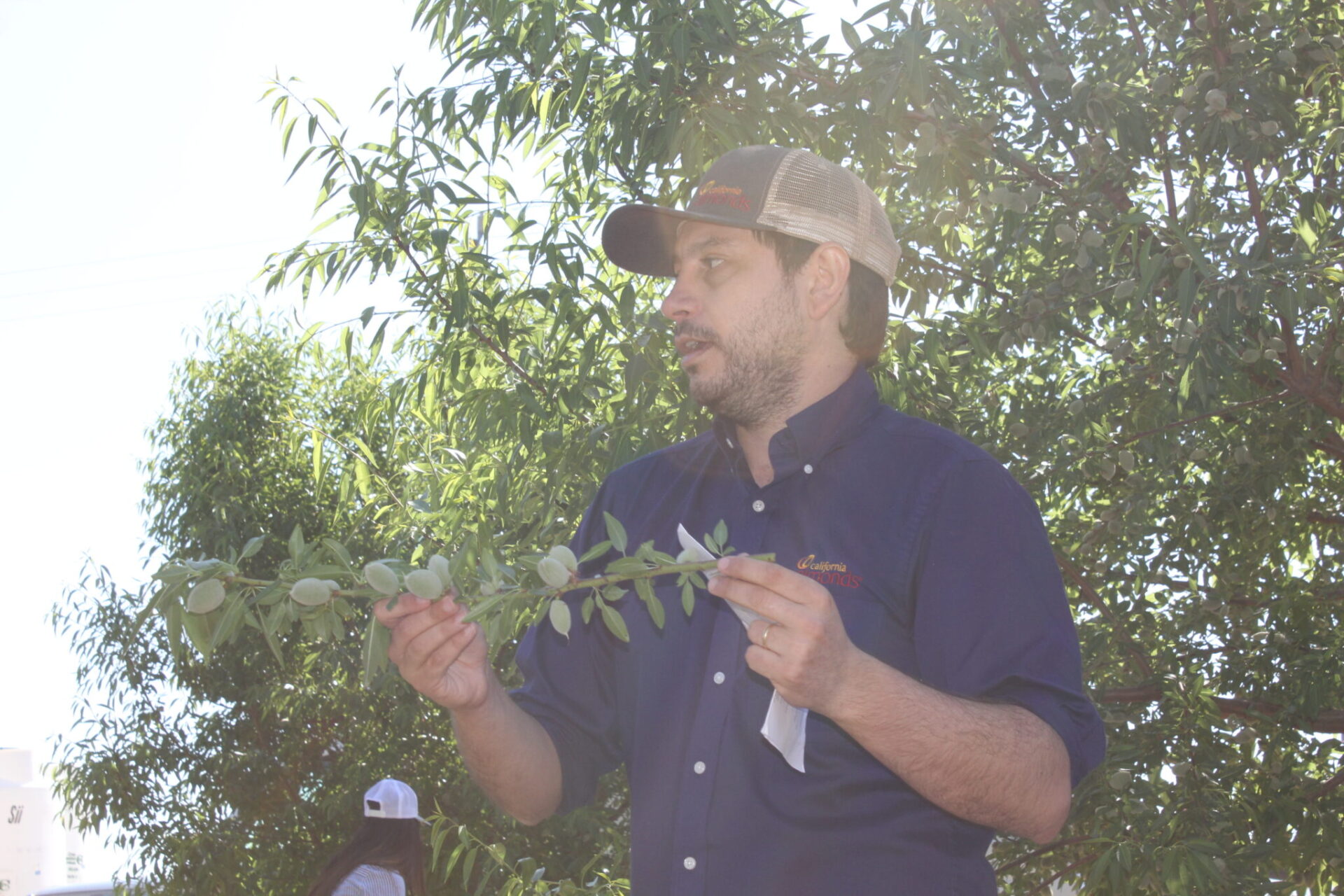
A new tool for predicting almond bloom can have multiple benefits.
Sebastian Saa, Almond Board of California’ associate director of agricultural research said that growers and researchers know that temperature and weather conditions in general play a significant role in fulfilling almond tree chilling requirements during dormancy. Optimal conditions will help achieve strong bloom by setting fruit and supporting sustainable yields.
Once almond trees fulfill their chilling requirement, they need to accumulate growing degree hours, warmer temperatures later in winter, for their buds to be vigorous and to stimulate a synchronized bloom. Ideal weather conditions result in optimal bloom in almond orchards with great bloom overlap between variety and pollinizer, among other benefits, Saa added.
Dr. Maciej Zwieniecki and a team of researchers at the UC Davis Department of Plant Sciences have been working on a model to predict almond bloom, studying winter carbohydrate metabolism in deciduous trees. The research team constructed a carbohydrate-temperature model that projects changes in starch and soluble carbohydrate concentrations by temperature. The team tested the C-T Model projections of bloom times with 20 years of California temperature and phenology records.
According to a published report in Elsevier Agricultural and Forest Meteorology, the C-T model provides a physiological framework for bloom forecast in almond orchards. It integrates contrasting notions of chill and heat and explains why abnormal winter temperatures may compromise bloom.
Saa said that thanks to the research, the almond industry now has a much better answer to the long-asked question: What are the ideal weather conditions for almond orchards leading up to bloom?
“This pioneering research has developed models that can predict bloom dates across the Central Valley for individual almond orchards,” Saa noted. “This is a great milestone of our California almond research program.”
This new tool can be used on many fronts, he said. Growers can analyze site potential for almond production or can check in advance to see if weather conditions in a particular year will promote good bloom overlap between varieties. By using this tool, Saa added, almond growers can also see if bloom is more likely to be weaker or stronger than in normal years.
“This improves our ability to better select sites for almond production as well as our ability to proactively plan our activities around bloom time, thanks to this research funded by California growers through Almond Board of California.”











